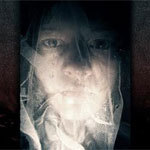|
|
 |
Dusted Reviews
Artist: Eleanoora Rosenholm Album: Vainajan Muotokuva Label: Fonal Review date: Aug. 19, 2008 |

|
|
|
 |
The Finnish language falls under the Finno-Ugric family and resembles closely fellow Eastern European languages such as Hungarian and Estonian. The language features vowel harmony and over 14 grammatical cases. Consonant clusters are rare and tongue-rolling is moderate. The origin of such long words has been attributed to the comparatively slow evolution from its proto-Uralian origins thousands of years ago.
I give this reductive linguistic lesson as an introduction because Eleanoora Rosenholm does no explaining on its first album, Vainajan Muotokuva (released in Finland on Fonal last year). The packaging for the album is entirely in Finnish, and all nine songs are in the group’s native tongue. There are no liner notes save for who plays in the group, and information on their website is limited. The language barrier is distracting for non-Finnish speakers in that you wouldn’t immediately guess this is allegedly about the 1959 suicide of a woman whom the band takes its name from. Though moody pieces such as “Ovet Ja Huoneet” are present, there is enough indie-pop bounce to give this record a conflicted feel. Without calling into question whether or not Rosenholm was even a real person, perhaps the aim of both the band and the record was to evoke musically what she was feeling before she passed.
It would be unfair and not a little xenophobic to hold the language barrier against the group (especially as Fonal has never made any special effort for non-Finns), so enjoying Nora Tommila’s gentle vocals as another layer in the instrumentation is more reasonable; hearing her sing is just as captivating as knowing what she’s singing about (which you can do on their site for the closer “Maailmanloppu,” or “End of the World”). Tommila’s smooth, low-pitched delivery is frequently tracked with accompaniment and can range from clearly enunciated rhymes to otherworldly ambiance. What binds all of her performances together is that she is right at the front of each mix. This is why it’s easy to confuse Tommila for Eleanoora Rosenholm without reading a biography.
For their part, Pasi Salmi and Mika Rättö keep shifting the music behind Tommila as the record unfurls. Disco is a recurring description of this record’s sound, and you can hear the ethereal Italo creep into the chorus of “Kopiokissa.” But that same song is as prone to late-’60s orchestral pop as it is Moroder. The ascending synth line on opener “Musta Rusuu” is an addictive hook, but “Kiltti Vai Tuhma” is the most obvious indie-pop offender with its childlike melody, chorus and brevity. The diversions are intriguing – “Kodinrakennusohjeet” is the highlight with its tribal trashcan polyrhythms – but no matter how dark or danceable its veneer, Vainajan Muotokuva is still a pop record at heart.
Along with Ville Leinonen, Vainajan Muotokuva marks a diversion from Fonal’s free-folk template. Though they are part of a diligent network of Finnish musicians, Eleanoora Rosenholm has taken on directly the vakava (serious) spirit that fellow Finns like Isalja and Kemialliset Ystävät have been avoiding, and succeed even if they don’t completely sell the concept behind it. Put another way: Listening to this album is way more enjoyable than trying to find information about it.
By Patrick Masterson
|







